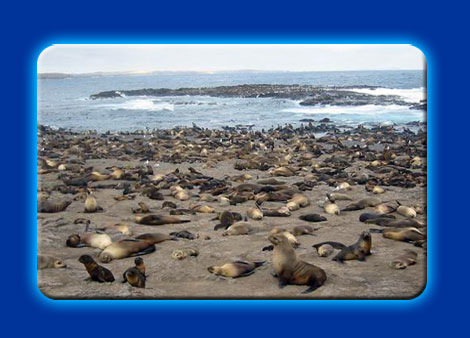Counting pups?
There are several different ways to count pups. Some ways cause little disturbance to the pups, but they may not be accurate. More accurate methods may cause more disturbance. Scientists have to decide which is the best method for each colony.
Aerial photography. For this method, you fly in a plane over a colony and take photos out the window. Back in the office, you look at the photos and count the number of pups you can see. Provided the plane stays high enough, seals will not be disturbed. But it might not be accurate.
Possible errors in aerial photography include; not seeing pups that are hidden under rocks, beside cliffs, in the water or in tightly packed groups. The errors with this method can be so big that it is not worth-while.
Ground counts. Here, the scientists walk through the colony, or view it from near-by, and count all the pups they can see.
An error with ground counts is that only the visible seals are being counted. An unknown proportion of pups will be hidden or off swimming. Also, it can be difficult to count pups if they are piled on top of each other.
Capture-Mark-Resight. In this method, a number of pups are caught and marked by trimming a bit of fur from their head. Then they mix with all the unmarked pups. You then count a section of the pups and record if they are marked or unmarked. From the ratio of marked to unmarked pups you can estimate the total number of pups present.
This method is the most accurate. But it also involves the greatest disturbance. It can have errors if pups that die or move out of the colony cannot be recorded.












